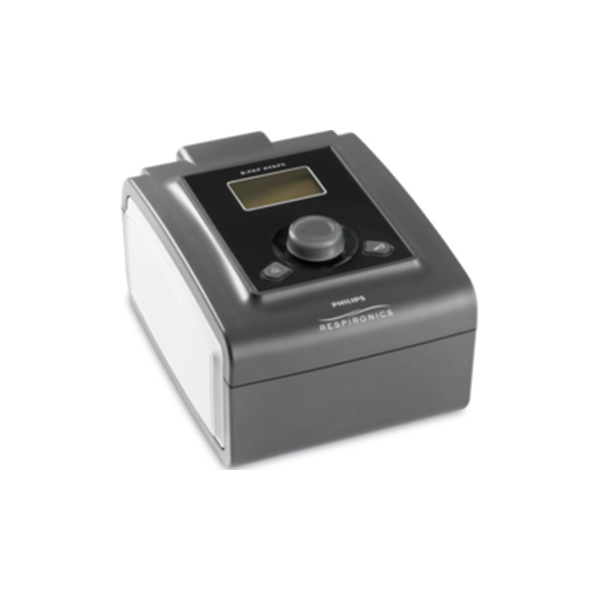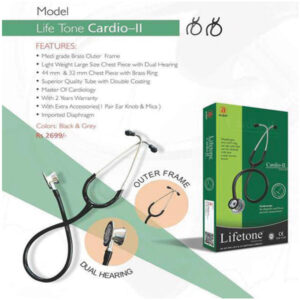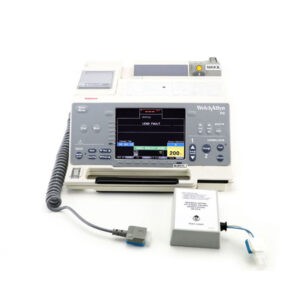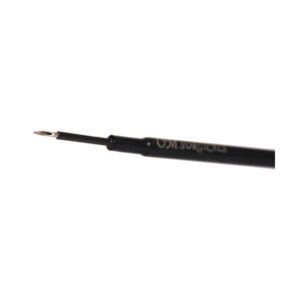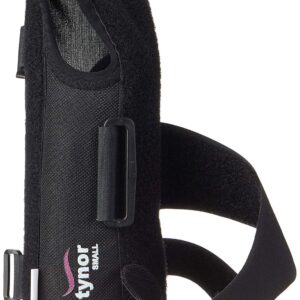Philips AVAPS Machine
MPIN: MP21447
Sign in to view priceAsk for Quote
Product Details:
| Minimum Order Quantity | 1 Unit |
| Body Material | PVC |
| Usage | Clinic, Hospital, Personal |
| Category | Diagnostic, Life Support, Treatment, Therapeutic |
| Condition | New |
| Application | Cardiology, Gynecology, Neurology, Pulmonology, Gynecology, Cardiology |
| LCD Display | Yes |
| Type | Digital, Portable |
| Filter | Foam |
| Brand | Philips Respironics |
| Color | Black |
| Automation Grade | Automatic |
| Portable | Yes |
AVAPS (Average Volume Assured Pressure Support), a unique clinically proven feature for patients with chronic respiratory insufficiency Respironics, the originator of bilevel technology and inventor of the well-known Auto-TRAK algorithm, offers chronic ventilation solutions based on years of experience, ensuring optimal synchronisation between the ventilator and patient, which is key to long term therapy success.
In 2004, Respironics launched AVAPS (Average Volume Assured Pressure Support) to combine the comfort and leak compensation efficacy of a pressure mode and the safety of a guaranteed average tidal volume.
AVAPS, the best of two worlds
AVAPS alters delivered pressures to counterbalance the changing workloads of ventilation due to body position, sleep stages and overall respiratory mechanics. AVAPS is available on the BiPAP Synchrony in S, ST, PC and T pressure modes.
At each breath, Digital Auto-TRAK estimates leak, patient flow and tidal volume. Leveraging the unique Auto-TRAK algorithm, AVAPS compares patient estimated tidal volume with the preset target, and accordingly increases or decreases the inspiratory pressure. Smooth pressure changes ensure patient comfort and prevent any potential patient-ventilator desynchronization. AVAPS combines the comfort and leak compensation of pressure mode and the safety and efficiency of guaranteed average tidal volume.
AVAPS, a unique clinically proven technology
For patients with Obesity Hypoventilation Syndrome“The addition of AVAPS to BPVS/ T provides beneficial physiologic improvements, resulting in a more efficient decrease of PtcCO2 compared to BPV-S/T therapy alone” Average Volume Assured Pressure Support in Obesity Hypoventilation a Randomized Cross- Over Trial. Storre, et al. Chest 2006.
– For patients with chest deformities
“After switching to BiPAP-AVAPS therapy, the results included an increase in average oxygen saturation, a reduction of pCO2 levels and an improved acceptance of therapy compared to previously used ventilation methods.”
Average Volume Assured Pressure Support (AVAPS) for Pressure-Controlled Ventilation (BiPAP Therapy). Kerl, et al. Poster presented at the German National Home Mechanical Congress, 2004.
For patients with hypercapnic COPD
“AVAPS mask ventilation has similar efficacy and produces better subjective effects on sleep as compared with PS in COPD patients with chronic hypercapnia.”
Specification
Mode S,S/T,T,PC,CPAP,AVAPS IPAP 4 TO 30 cmH2O
EPAP 4 To 25 cmH2O
Target Tidal Volume 200 ml to 1500 ml
CPAP 4 To 20 cmH2O
Breath Rate 0 To 30 BM
Leak Compensation Upto 60 LPM
Auto Track Sensitivity Blower + Inlet Valve
Shipping Policy
Orders made at Medpick are initiated and processed for shipment upon receipt of request from the customer. Please note that our Shipping Services (Fee, Transportation, Loss or Damage of any shipment, etc.) are in accordance with the Seller\'s terms of Shipment.
Refund Policy
Please refer to Medpick Return Policy.
Cancellation / Return / Exchange Policy
Please refer to Medpick Return Policy.
 REGISTER
REGISTER
 SIGN IN
SIGN IN
